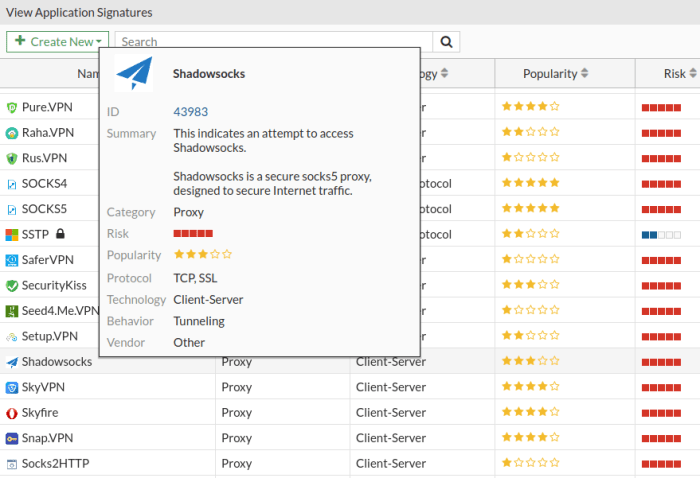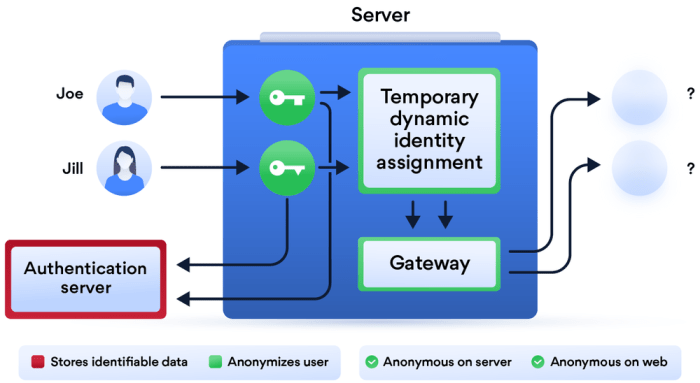ssh.sshslowdns.com – In the realm of virtual private networks (VPNs), WireGuard has emerged as a game-changer, offering unparalleled speed, security, and simplicity. However, for those seeking even greater privacy and protection, WireGuard obfuscation is a technique that can elevate your VPN experience to new heights.
WireGuard obfuscation is the art of disguising VPN traffic to make it appear like regular internet traffic, effectively bypassing censorship and surveillance measures. By employing various techniques such as protocol tunneling, traffic encryption, and IP address masking, obfuscation ensures that your online activities remain private and secure.
WireGuard Overview

WireGuard is a modern, easy-to-use, and extremely fast VPN protocol designed to provide secure and efficient network communication.
It utilizes state-of-the-art cryptography and a simplified architecture, making it an ideal solution for various use cases, including remote access, secure browsing, and protecting sensitive data.
Key Features
- Cryptography: WireGuard employs modern and robust encryption algorithms, such as ChaCha20, Poly1305, and Curve25519, to ensure data privacy and integrity.
- Simplified Architecture: Unlike traditional VPN protocols, WireGuard has a simple and efficient architecture, reducing complexity and improving performance.
- Speed: WireGuard is renowned for its exceptional speed, often outperforming other VPN protocols in terms of latency and throughput.
- Cross-Platform Support: WireGuard is compatible with various platforms, including Linux, Windows, macOS, iOS, and Android, ensuring wide accessibility.
- Open Source: WireGuard is an open-source project, allowing for transparency, community contributions, and independent audits.
Architecture
WireGuard operates on a simplified architecture that consists of:
- Interface: WireGuard creates a virtual network interface on the client and server, allowing them to establish a secure connection.
- Cryptographic Keys: WireGuard utilizes public and private keys for authentication and encryption, ensuring secure communication.
- Tunneling: Data is encapsulated within a UDP tunnel, providing a secure and efficient channel for data transmission.
WireGuard Obfuscation
WireGuard obfuscation is a technique used to conceal the true nature of WireGuard traffic, making it appear like regular internet traffic to bypass firewalls, deep packet inspection (DPI), and other forms of network monitoring.
WireGuard obfuscation is essential for users who need to access the internet securely and privately in environments where VPNs are blocked or heavily restricted. It allows users to bypass censorship and surveillance measures, ensuring their online privacy and freedom.
Obfuscation Techniques
- Port Obfuscation: Assigns WireGuard traffic to non-standard ports, making it harder to detect and block.
- Protocol Obfuscation: Encapsulates WireGuard packets within other protocols, such as TLS or HTTP, to disguise its presence.
- Packet Fragmentation: Breaks WireGuard packets into smaller fragments, making it difficult for DPI systems to identify and analyze.
- Steganography: Hides WireGuard data within seemingly innocuous files or images, making it harder to detect.
Benefits of WireGuard Obfuscation
WireGuard obfuscation provides significant advantages in enhancing privacy and security for internet users. It offers multiple benefits that make it an attractive solution for individuals and organizations seeking to protect their online activities.
One of the primary benefits of WireGuard obfuscation is its ability to bypass restrictive firewalls and network blocks. By disguising the traffic as regular internet traffic, obfuscation makes it difficult for firewalls and other network restrictions to detect and block WireGuard connections.
This allows users to access the internet freely and securely, even in regions with strict internet censorship or network limitations.
Enhanced Privacy
WireGuard obfuscation also enhances privacy by concealing the user’s IP address and other identifying information. When using obfuscated WireGuard connections, the user’s traffic is routed through multiple servers, making it difficult for third parties to track or monitor their online activities.
This added layer of privacy protection is particularly beneficial for individuals who value their online anonymity and privacy.
Improved Security
Furthermore, WireGuard obfuscation improves security by preventing eavesdropping and man-in-the-middle attacks. By encrypting the traffic and disguising it as regular internet traffic, obfuscation makes it virtually impossible for attackers to intercept or manipulate the data being transmitted. This ensures the integrity and confidentiality of the user’s data, protecting it from unauthorized access and malicious intent.
Drawbacks of WireGuard Obfuscation
While WireGuard obfuscation provides numerous advantages, it is essential to acknowledge potential drawbacks:
One limitation is the potential impact on performance. Obfuscation adds an additional layer of processing, which may introduce a slight decrease in speed compared to running WireGuard without obfuscation. This performance penalty can be more pronounced on resource-constrained devices or when using high-bandwidth connections.
Compatibility Issues
Another potential drawback is compatibility issues. Obfuscation techniques may not be compatible with all WireGuard implementations or devices. For instance, some older versions of WireGuard or third-party clients may not support obfuscation, which can limit the ability to use obfuscation across different devices or platforms.
Use Cases for WireGuard Obfuscation
WireGuard obfuscation finds applications in various scenarios where privacy and security are paramount. It can be particularly beneficial in the following industries or applications:
Corporate Networks
WireGuard obfuscation can be employed in corporate networks to enhance the security of remote access and protect sensitive data. By obscuring the presence of the WireGuard protocol, organizations can mitigate the risk of detection and interception by unauthorized parties.
Journalism and Activism
WireGuard obfuscation is crucial for journalists and activists operating in restrictive environments. It allows them to communicate securely and bypass censorship or surveillance by disguising their network traffic.
Gaming and Streaming
WireGuard obfuscation can improve the gaming and streaming experience by bypassing network restrictions and reducing latency. By hiding the VPN connection, users can enjoy smoother gameplay and uninterrupted streaming.
E-commerce and Finance
WireGuard obfuscation is essential for e-commerce and financial institutions that handle sensitive customer data. It prevents malicious actors from intercepting or tampering with transactions by concealing the VPN connection.
Implementing WireGuard Obfuscation
Implementing WireGuard obfuscation involves configuring your WireGuard client and server to use obfuscation techniques. Here are the general steps:
- Choose an obfuscation method: Select an obfuscation method, such as mbedTLS, that is supported by your WireGuard implementation.
- Configure the WireGuard client: In the client configuration file, specify the obfuscation method and any additional parameters required.
- Configure the WireGuard server: In the server configuration file, specify the same obfuscation method and parameters as the client.
- Enable obfuscation: Start the WireGuard client and server with obfuscation enabled.
Example: Consider using the mbedTLS obfuscation method. In the client configuration file, add the following lines:“`[Interface]PrivateKey = /path/to/private.keyAddress = 10.0.0.1/24DNS = 8.8.8.8[Peer]PublicKey = /path/to/public.keyAllowedIPs
= 0.0.0.0/0Endpoint = example.com:51820ObfuscatedDNS = 1.1.1.1[WireGuard]ObfuscatedPrivateKey = /path/to/obfuscated_private.keyObfuscatedAddress = 10.0.0.2/24ObfuscatedDNS
= 1.1.1.1“`On the server side, add the following lines to the configuration file:“`[Interface]PrivateKey = /path/to/private.keyListenPort = 51820[Peer]PublicKey = /path/to/public.keyAllowedIPs = 0.0.0.0/0Endpoint = example.com:51820ObfuscatedPrivateKey
= /path/to/obfuscated_private.keyObfuscatedAddress = 10.0.0.1/24ObfuscatedDNS = 1.1.1.1“`
Configuring WireGuard Obfuscation

WireGuard obfuscation offers various configuration options to tailor it to specific use cases. These options include:
- Protocol: The underlying protocol used for obfuscation, such as mbedTLS or ChaCha20-Poly1305.
- Cipher: The encryption algorithm used to protect the data, such as AES-256 or ChaCha20.
- Port: The port number used for the obfuscated connection.
- Obfuscation method: The specific technique used to disguise the WireGuard traffic, such as Stealth or MurmurHash3.
- Payload size: The maximum size of the obfuscated payload.
To optimize obfuscation settings, consider the following factors:
- Security requirements: Choose a strong protocol, cipher, and obfuscation method to ensure adequate protection against traffic analysis.
- Performance: Higher levels of obfuscation may introduce performance overhead, so balance security with speed.
- Network environment: Some obfuscation methods may be more effective in specific network environments, such as those with strict firewalls or DPI systems.
Troubleshooting WireGuard Obfuscation
Identifying and resolving common issues with WireGuard obfuscation is crucial for ensuring a seamless and secure connection. This section explores potential problems and provides practical troubleshooting steps to address them.
Common Issues and Solutions
1. Connectivity Problems
- Ensure that WireGuard is properly configured on both the client and server.
- Verify that the obfuscation method is supported by both devices.
- Check if the firewall settings allow incoming and outgoing traffic on the appropriate ports.
2. Performance Degradation
- Obfuscation can introduce additional overhead, which may affect performance.
- Experiment with different obfuscation methods to find the best balance between security and speed.
- Consider using a more powerful device or optimizing the network infrastructure.
3. Incompatibility with Some Applications
- Certain applications may not be compatible with obfuscated connections.
- Disable obfuscation for those applications or find alternative methods of securing their traffic.
4. Detection by Firewalls or Intrusion Detection Systems (IDS)
- Some firewalls or IDS may detect and block obfuscated traffic.
- Try using different obfuscation techniques or consider using a VPN service that provides advanced obfuscation capabilities.
5. DNS Leaks
- Obfuscation does not prevent DNS leaks by default.
- Configure your DNS settings to use a secure DNS provider or use a VPN service that includes DNS leak protection.
Comparison with Other Obfuscation Techniques
WireGuard obfuscation is not the only technique for concealing VPN traffic. Other methods include:
- OpenVPN Scramble: Encrypts metadata, making it harder to detect VPN traffic.
- Stunnel: Encapsulates VPN traffic within another protocol, such as SSL/TLS.
- Tor: Anonymizes traffic by routing it through a network of volunteer nodes.
Advantages of WireGuard Obfuscation
- Faster than other techniques.
- More efficient in resource usage.
- Simpler to configure.
Disadvantages of WireGuard Obfuscation
- May not be as effective against sophisticated deep packet inspection.
- Not as widely supported as other techniques.
OpenVPN Scramble
OpenVPN Scramble is a popular obfuscation technique that encrypts the metadata of VPN traffic. This makes it more difficult for network administrators to detect that the traffic is coming from a VPN.
Advantages of OpenVPN Scramble
- More effective against deep packet inspection than WireGuard obfuscation.
- Widely supported by VPN clients and servers.
Disadvantages of OpenVPN Scramble
- Slower than WireGuard obfuscation.
- More complex to configure.
Stunnel
Stunnel is an open-source program that encapsulates VPN traffic within another protocol, such as SSL/TLS. This makes it appear as if the traffic is coming from a legitimate source, such as a web server.
Advantages of Stunnel
- Highly effective against deep packet inspection.
- Widely supported by VPN clients and servers.
Disadvantages of Stunnel
- Slower than WireGuard obfuscation and OpenVPN Scramble.
- More complex to configure.
Tor
Tor is a free and open-source software that anonymizes traffic by routing it through a network of volunteer nodes. This makes it very difficult for network administrators to track the source of the traffic.
Advantages of Tor
- Highly effective against deep packet inspection.
- Provides anonymity.
Disadvantages of Tor
- Very slow.
- Not suitable for all applications.
Future of WireGuard Obfuscation

WireGuard obfuscation is an evolving field with ongoing advancements and future trends shaping its use. Here are some key developments and their potential impact: